Original Title: "Bitcoin Falls Below $110,000, Whose Wallets Are Losing Money Again?"
Original Author: 1912212.eth, Foresight News
After the black swan crash on October 11, the market was generally worried about a "second dip." Just a few days later, another crash occurred. On October 17, Bitcoin fell from a rebound of $116,000, experiencing four consecutive daily declines. By around 4 PM today, it briefly dipped to around $104,500, just shy of the crash low of $102,000 on October 11. ETH also could not escape, dropping to $3,706, while SOL fell to around $175, with many altcoins experiencing widespread declines.
Coinglass data shows that in the past 24 hours, the total liquidation of open contracts across the network reached $1.189 billion, with long positions liquidated amounting to $935 million. The largest single liquidation occurred on Hyperliquid - ETH-USD, valued at $20.4274 million. Alternative data indicates that the market fear index has dropped to 22, entering a state of extreme panic.
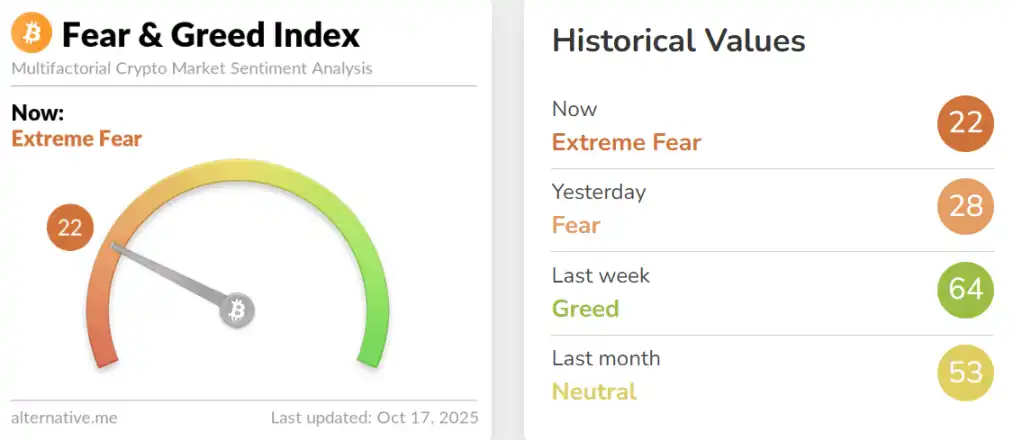
Significant Net Outflows from US BTC and ETH Spot ETFs
Since the crash event, the data for US BTC spot ETFs has shown significant net outflows. From October 10 to October 16, only on October 14 was there a recorded net inflow of $102.58 million, with the rest being net outflows. The net outflow on October 1 even exceeded $536 million, marking a new low since August of this year.
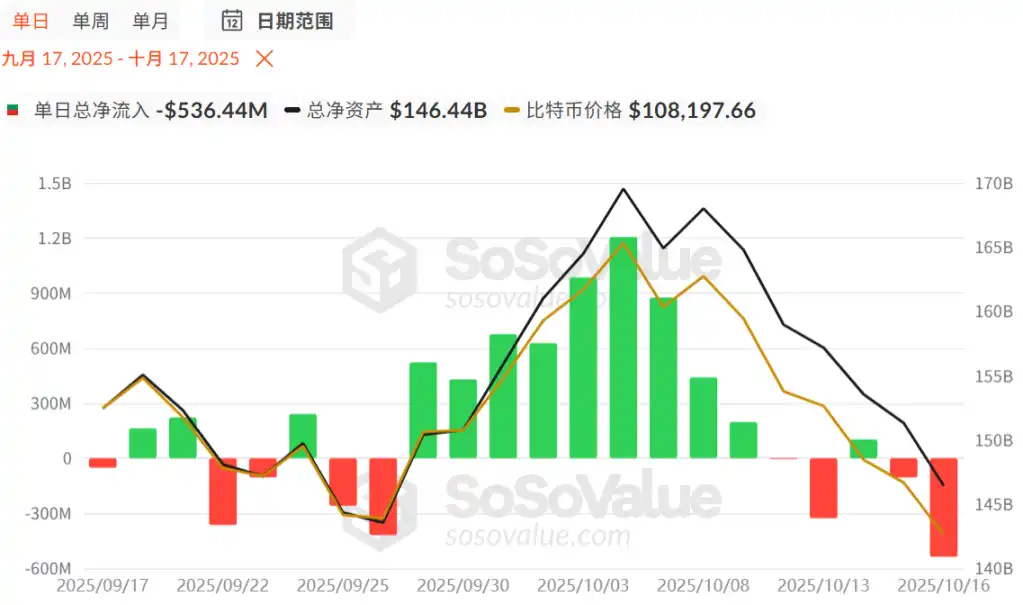
The situation for Ethereum spot ETFs is similarly grim, with large net outflows occurring continuously since October 9. On October 13, the net outflow exceeded $428 million, setting a new high for net outflows since September of this year.
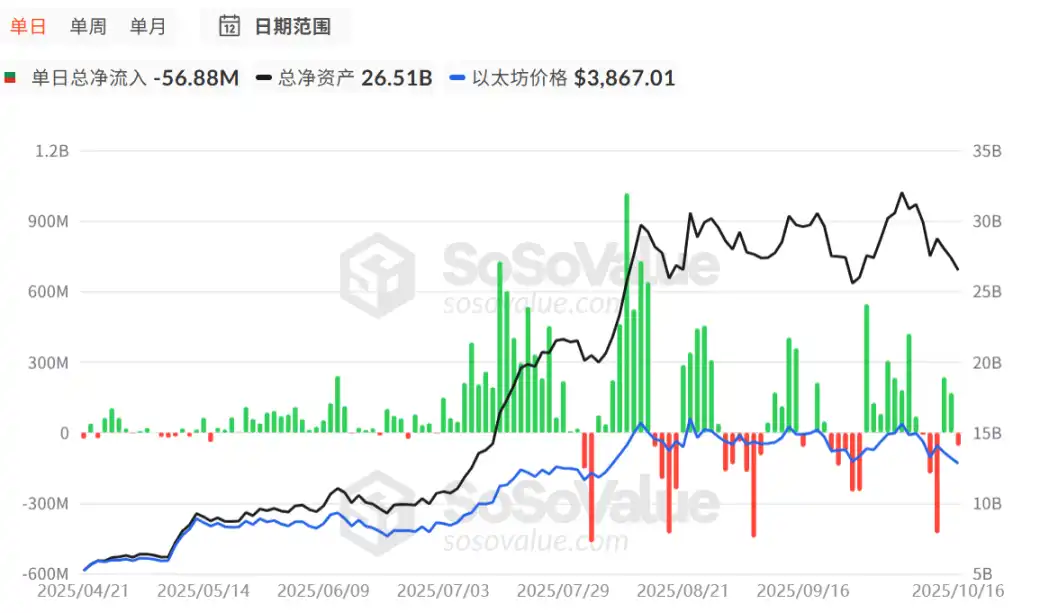
The Crash Event Has Weakened Market Confidence
DeFiance Capital, which once thrived by betting on multiple DeFi projects in the previous cycle, suffered losses in this crash event. On October 14, its founder Arthur posted on social media, stating, "We are fine; the fund has incurred some losses, but it does not rank among our top five days of profit and loss fluctuations. I am just very angry and disappointed; this crash has set the entire crypto space back significantly, especially for the altcoin market, as most price discovery processes occur on offshore CEX."

He even pessimistically believes that this crash event represents the end of the crypto era.
The previously hyped crypto treasury DAT trend has also cooled off. Tom Lee, chairman of BitMine, the largest Ethereum holding institution, stated that this bubble may have burst.
Previously, the US Nasdaq-listed company QMMM Holdings announced on September 9, 2025, its intention to invest $100 million to establish a cryptocurrency reserve, with its stock price rising 9.6 times within three weeks. The US Securities and Exchange Commission (SEC) deemed the company suspected of manipulating stock prices using social media platforms at the end of September, ordering it to suspend trading from September 29. The company has been suspended ever since. Caixin's visit to its Hong Kong headquarters on October 16 found the office empty, and when inquiring with employees of another nearby company, they stated that the company had moved in September and they were unaware of its new location.
Zhao Changpeng commented, "All crypto treasury (DAT) companies should use third-party crypto custodians and have their accounts audited by investors."
US Small Banks Face Crisis, Market Sells First and Asks Questions Later
Zions Bancorp and Western Alliance Bancorp, two regional banks in the US, disclosed on Thursday that they suffered losses due to fraud involving bad commercial mortgage investment funds. Although the scale of their losses is relatively small compared to recent other credit crises, involving only tens of millions of dollars, the market's reaction was exceptionally severe.
The German DAX index fell by 2.13%, the UK FTSE 100 index dropped by 1.6%, the Nikkei 225 index decreased by 1.44%, the Australian S&P/ASX 200 index fell by 0.81%, and all three major US stock index futures declined.
Panic sentiment quickly spread, dragging down the entire banking sector, with the total market capitalization of 74 large US banks erasing over $100 billion in a single day.
This "sell first and ask questions later" mentality spread rapidly. JPMorgan analysts Anthony Elian and Michael Pietrini noted in a report that they are also questioning "why all these credit 'isolated incidents' seem to be happening in a short period." However, the sell-off did not spare large bank stocks, with shares of Citigroup and Bank of America both dropping over 3%.
The 2023 US banking crisis had previously triggered a significant pullback in the crypto market.
Is the Market Turning Bearish?
Chris Burniske, a partner at Placeholder VC, stated, "I increasingly feel that last Friday's crash has put the crypto market in a state of stagnation in the short term. After such a crash, it is difficult to quickly form sustained buying pressure. This cycle has been disappointing for most people, which may limit actions as everyone is waiting for the market to recover or return to previous historical highs. It is easy to get caught up in the minutiae of charts, but if you look at the monthly charts of BTC and ETH, they show we are still in a high range (though there are cracks), if you consider taking profits."
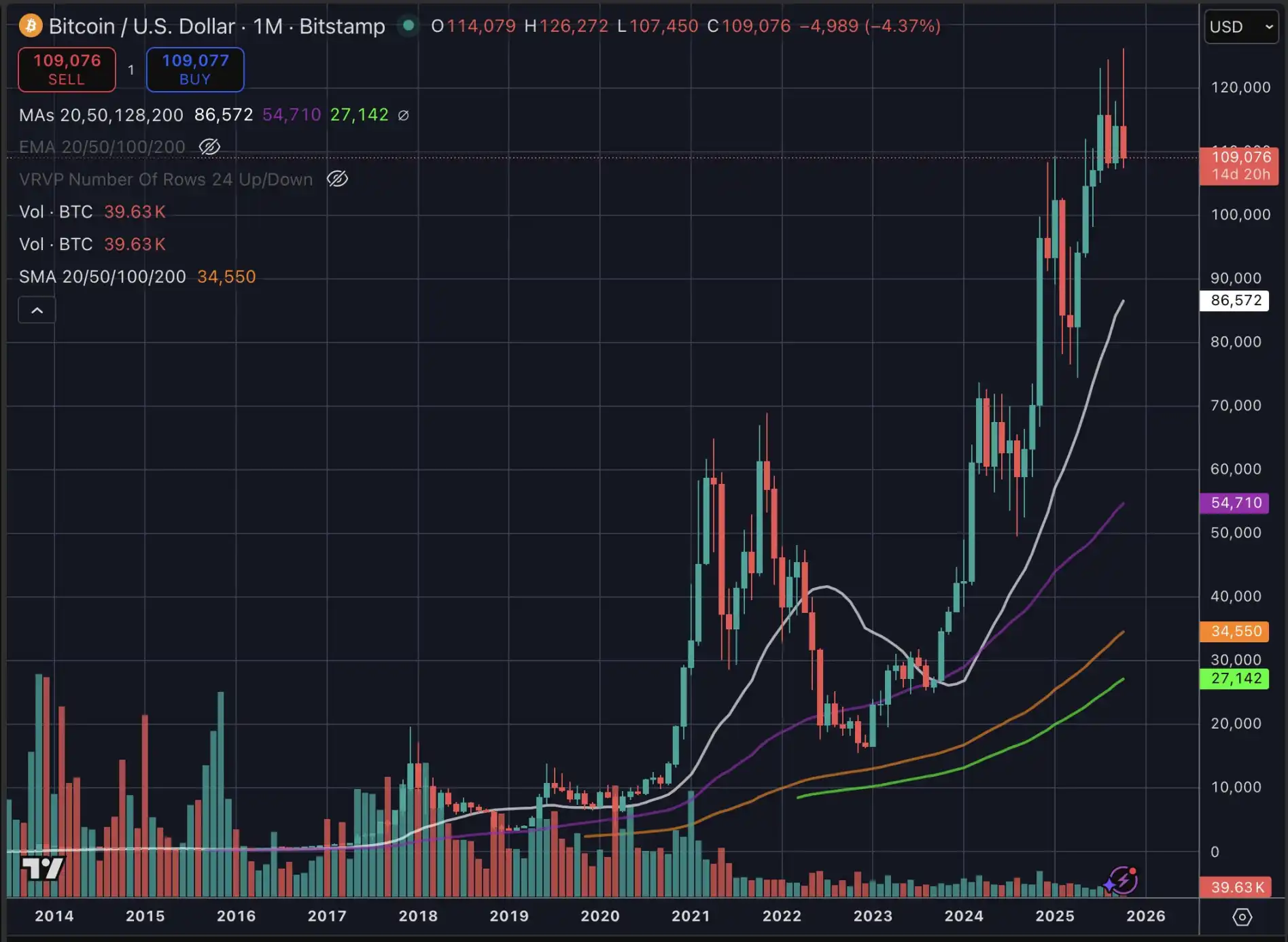
MSTR is declining, gold is sending warnings, and the credit market is the same, while stocks will be the last to react. We can always expect a weak rebound, but I have taken action (remember, cashing out is never all or nothing). I will observe BTC's reaction to $100,000, but when BTC reaches $75,000 or lower, I may become interested in the market again. This bull market is different from previous ones, and the next bear market will also be different."
McKenna, a partner at Arete Capital, stated that the market is in the process of forming a bottom, which will take 40-60 days to establish. All price actions during this interval are oscillatory and washout. "By mid-November, we should start expecting constructive results and welcome a positive December and the first quarter of 2026."
Glassnode tweeted that Bitcoin is currently at a critical support level, with the price below the 200-day moving average ($107,400) and just above the 365-day moving average ($99,900), while also facing resistance from the 111-day moving average ($114,700).
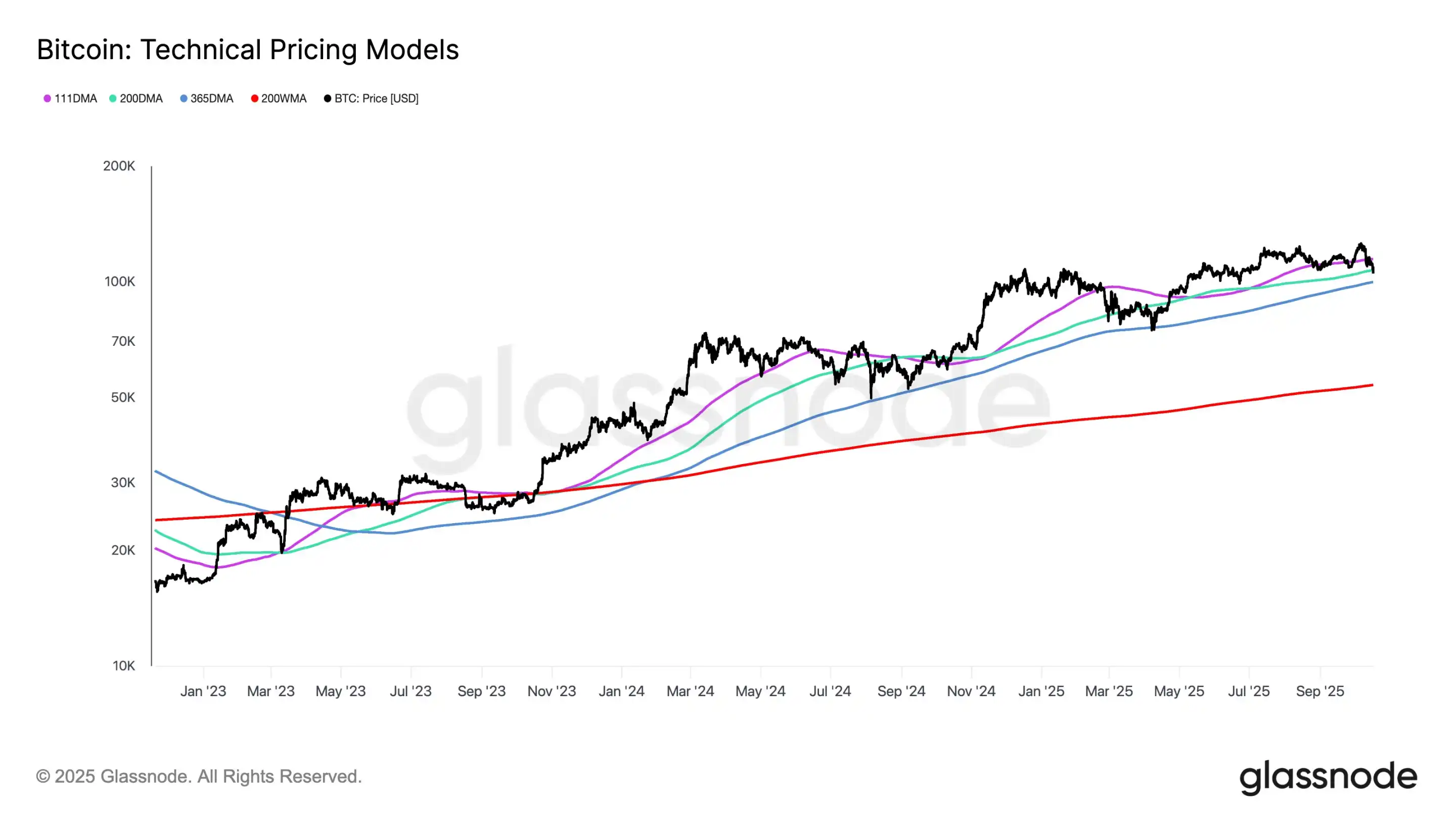
If it can hold above the 365-day moving average, the trend may stabilize; if it falls below this level, it may face deeper correction risks.
免责声明:本文章仅代表作者个人观点,不代表本平台的立场和观点。本文章仅供信息分享,不构成对任何人的任何投资建议。用户与作者之间的任何争议,与本平台无关。如网页中刊载的文章或图片涉及侵权,请提供相关的权利证明和身份证明发送邮件到support@aicoin.com,本平台相关工作人员将会进行核查。


